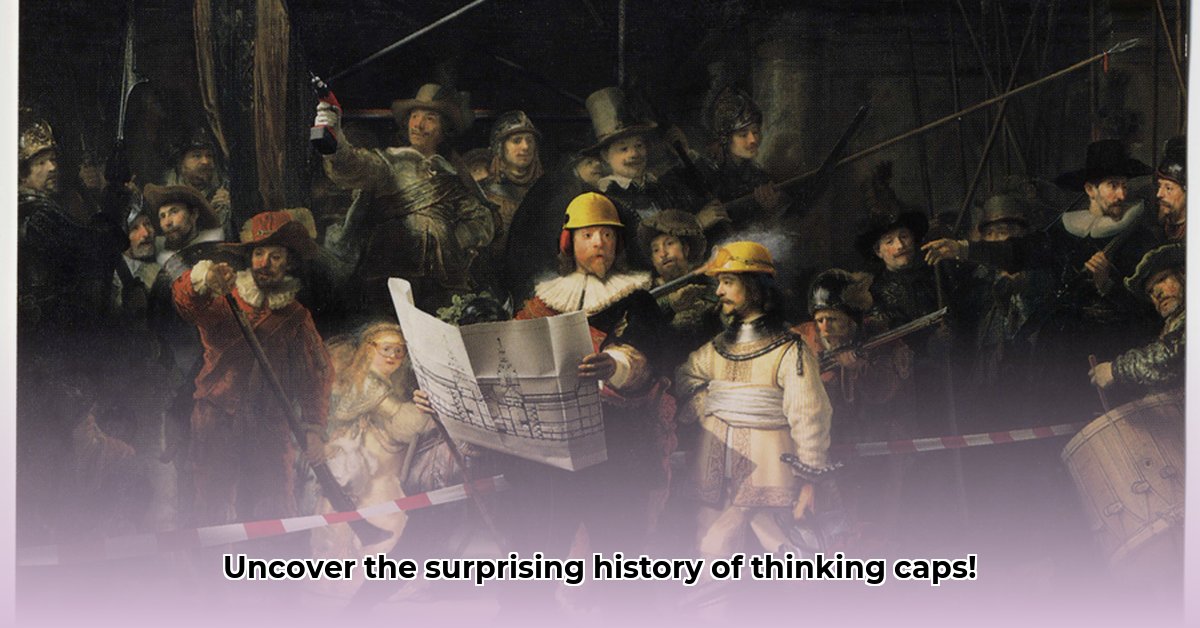
History of Thinking Caps: From "Considering Cap" to Modern Metaphor
Ever wondered about the origin of the phrase "thinking cap"? It's more than just a casual expression; it boasts a surprisingly rich history stretching back to the 17th century. This journey explores its evolution from a potential reference to actual headwear to its current status as a universally understood metaphor for focused thought. For a deeper dive into the idiom's history, check out this fascinating article: Thinking Cap History.
Our narrative begins not with "thinking cap," but with its ancestor, "considering cap." The earliest known written instance appears around 1605 in the works of Robert Armin, a renowned Elizabethan actor and playwright. Was this "considering cap" a literal hat, perhaps worn by judges or scholars during deliberations? Or was it already a metaphorical expression? The historical record remains somewhat ambiguous.
Some scholars suggest a literal interpretation, proposing that a specific type of cap symbolized intense concentration. Others believe it was metaphorical from its inception, a clever phrase capturing the essence of deep thought. Lacking definitive evidence of a specific "considering cap," we're left to speculate on its true nature. This linguistic ambiguity adds to the idiom's intrigue.
The Rise of the "Thinking Cap"
By the mid-1800s, the more familiar "thinking cap" emerged, gradually gaining traction in newspapers and literature. The shift from "considering cap" to "thinking cap" is significant, reflecting a broader linguistic trend toward brevity and conciseness. "Thinking cap" is simply more memorable and easier to use. This change is arguably aided by the shift in social perceptions of head-wear during the associated time periods. The shift away from ornate hats to simpler styles might have subtly influenced the idiom's evolution: a less complex hat, a less complex phrase.
This transition also mirrors broader societal changes. As the 18th and 19th centuries unfolded, the elaborate hats and caps of the 17th century gave way to less ornate styles. Did this changing fashion inadvertently contribute to the phrase's evolution? It's a compelling question for further linguistic and cultural analysis.
The Enduring Power of a Metaphor
Today, "thinking cap" is unequivocally figurative. No one literally dons a hat to solve a problem. Yet, the image it evokes—focused attention, intense mental exertion—remains strikingly potent. We use it to convey complete mental engagement, the dedication of all our cognitive energy to a task. Its enduring appeal speaks to its cultural relevance and the continuing human need to conceptualize and explain complex mental effort.
The catchy alliteration ("thinking cap") undoubtedly contributes to its memorability. Catchy phrases tend to stick, and this is no exception. The transition from the more formal "considering cap" further reveals a societal movement toward conciseness and efficiency in language.
The "Thinking Cap" in Modern Usage: A Legacy of Thought
The "thinking cap's" history exemplifies the dynamism of language; it's a compelling illustration of how idioms evolve, reflecting cultural shifts and linguistic trends. Its continued use reveals its capacity to connect across generations. It's a microcosm of how language shapes and reflects our lives, sparking reflection on the very nature of thought itself.
Key Takeaways: A Concise Summary
- Ancient Roots: The "thinking cap" idiom's origins trace back to at least the 17th century, evolving from its predecessor, the "considering cap."
- Metaphorical Shift: The meaning transitioned from possibly literal headwear to a pure metaphor for focused concentration.
- Enduring Relevance: The idiom remains a powerful and widely understood expression of mental effort, highlighting its enduring significance.
The story of the "thinking cap" offers a captivating glimpse into the world of linguistics. It underscores that even the simplest phrases can hold profound historical and cultural weight. It's a reminder of the ever-evolving nature of language and its ongoing capacity to shape our understanding of the world. It’s a testament to the rich tapestry of linguistic evolution, reflecting both the past and continuing to resonate in modern communication.